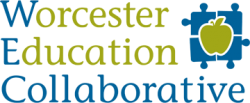What is SEAD?
“Research shows that when schools fully integrate social, emotional, and academic development into K-12 education, academic performance improves…students with healthy social and emotional development are more successful in the workforce and experience greater lifetime well-being.” -The Aspen Institute
Here is an SEAD fact sheet for a quick but thorough outline.
SEAD has many different components, just as every student has many different aspects of their person. The three main pillars of SEAD are the learning environment; teaching social, emotional, and cognitive skills; and the third is embedding those skills into academic learning. Click here for more.
learning environments
“Safe, relationship-based, and equitable learning environments” are key to successfully incorporating social and emotional learning into children’s academic lives. Click here for more.
relationships
Demonstrated here is the importance of strong, vulnerable, and long-lasting relationships between students and their educators. These connections not only improve students’ academic performance, but positively influence their brain development.
Trauma-sensitivity
One school demonstrates how they are shifting away from compliance-based education to one where students feel safe. Educators are aware of the adverse circumstances of their students’ lives with the help of a full-time trauma-informed social worker.
Check-in/check-out
Another example of a SEAD strategy that creates an environment of student support. At this school, students most in need of extra support make goals for themselves each day and then evaluate their day with a faculty member.
Informative Articles
SEAD through a Race-Equity Lens
Social-emotional learning looks different to different people. Just as academic outcomes differ by race and ethnic background, so does social and emotional outcomes and strategies.
Social Emotional Learning and Equity
Children have different life experiences, and often they vary according to race, ethnic background and socioeconomic status. This source addresses the need for professional education so that teachers can continue to learn about the realities that their students face, with specific tips for educators on overcoming potential obstacles.
When Students are Traumatized, Teachers are Too
A reminder that teaching and caring for kids with adverse life experiences can take a serious toll on educators. The only way to improve the learning environment of our children it to properly care for their teachers. Here are some statistics and strategies to help us understand and mediate.
Teaching and Embedding Social, emotional, and cognitive skills into academics
Student self-assessment
Here is an example from the Institute for Student Achievement in which students engage in self-assessment as part of their math class. This is also known as metacognition, or being aware of one’s own thought process. Students become invested in their own success and can learn strategies for improving their academic performance. This is just one example of how schools might incorporate SEAD seamlessly throughout the school day, as part of the curriculum.
CASEL outlines the main components of social-emotional learning. The website also offers an in-depth look at the impact SEL can make on children’s outcomes.
The Overlooked Third Domain of Social-Emotional Learning: Cognitive Skills
This article discusses the importance of emphasizing cognitive skills, which is part of the social-emotional learning model but is often overlooked.
6 Recommendations for Supporting Students’ Social, Emotional, and Cognitive Growth
Here are six recommendations to get your school or community started on improving student outcomes.
21 Simple Ways to Integrate Social-Emotional Learning Throughout the Day
As the title suggests, there are simple practices that teachers can adopt regardless of their schools’ practices or funding to foster social-emotional learning.
For more information on strategies for integrating SEL visit our Universal Strategies pages.
Mindfulness
What is Mindfulness?
According to University of California, Berkeley, Mindfulness is about “maintaining a moment-by-moment awareness of our thoughts, feelings, bodily sensations, and surrounding environment, through a gentle, nurturing lens.”
While Mindfulness in schools is still a new development, recent research has overall shown that Mindfulness practices in schools can help reduce students’ anxiety, blood pressure, absenteeism, and improve their sleep (among many other benefits).
Students show their parents how mindfulness works
Ms. Katie Wohlford of Fairview Elementary School helped students put on a show about social-emotional learning, ways our bodies and minds react under stress, and about ways to regulate emotion.
"Release" Original Film on Student Anxiety
Mindful Schools graduate, Julie Bayer Salzman, made this short film to show the anxiety and stress that students in middle Sschool deal with, and how mindfulness can help alleviate that pressure.
Informative Articles and curricula
The Effect Mindfulness Can Have on Children
Study done by Jonathan Koch that shows what mindfulness looks like in the classroom. Mindfulness has an overall positive effect on the well-being of elementary-aged children, including improvements in their behavior, ability to focus, and academic progress.
Mindfulness in Middle School Can Enhance Academic Performance
Researchers at MIT show that practicing mindfulness in middle school classrooms can enhance academic performance, lower suspension rates, and lower stress levels.
Mindfulness Programs for Students, Families, and Teachers
Wise Minds. Big Hearts. provides either an 8-week, 16-week, or a year long guided mindfulness curriculum as well as workshops for students, teachers, or families.





